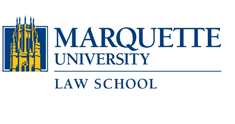Abstract
Prescriptive easements form an important but often overlooked building block in the architecture of property law. Prescription, the doctrine that allows a long-term user of another’s land to acquire a prescriptive easement burdening that land without compensating the owner, transforms a trespass into a permanent property right good against the world. Of all the elements of prescription, adverse use or adversity is often the most intensely disputed and often proves to be outcome determinative. Given its importance to prescriptive easement claims, courts have developed a number of presumptions to frame their analysis of the adversity element. For many years, leading treatise writers have advised that if a prescriptive easement claimant establishes that otherwise unexplained use of another’s land has occurred in an open and notorious manner and continued without interruption for the statutory prescription period, the claimant’s use is presumed to have been adverse to the owner. The same leading authorities acknowledge that a minority of courts employ the opposite presumption—that otherwise unexplained use is presumed to be permissive.
Repository Citation
John A. Lovett,
Restating the Law of Prescriptive Easements,
104 Marq. L. Rev. 939
(2021).
Available at: https://scholarship.law.marquette.edu/mulr/vol104/iss4/3
